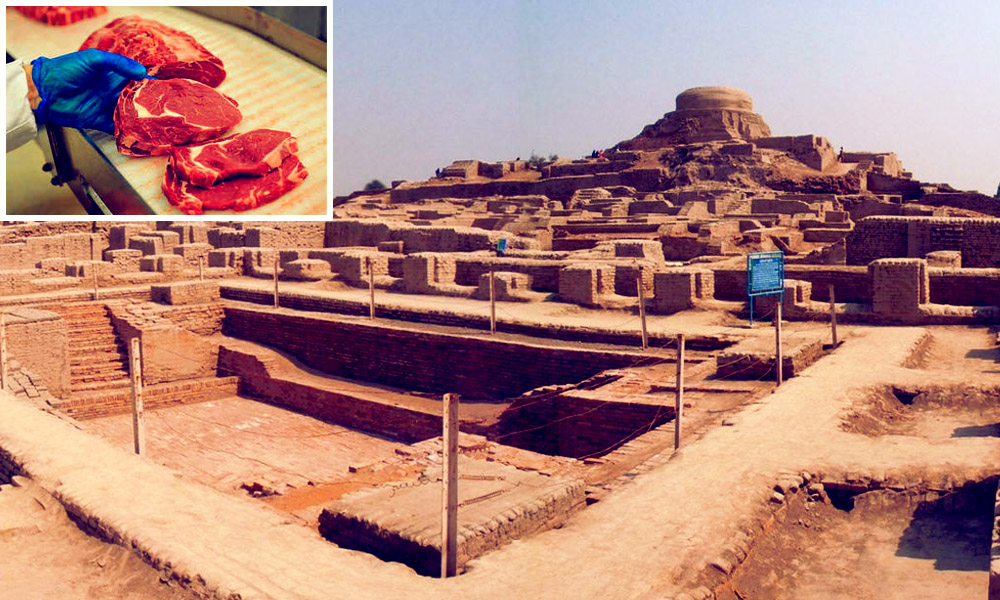
Image Credit: Sapeins
Indus Valley Civilisation Had Preference For Beef, Meat-Heavy Diet, Reveals Study
Writer: Navya Singh
Navya writes and speaks about matters that often do not come out or doesn’t see daylight. Defense and economy of the country is of special interest to her and a lot of her content revolves around that.
India, 10 Dec 2020 1:02 PM GMT | Updated 10 Dec 2020 1:04 PM GMT
Creatives : Rajath
A free spirit who find meaning in life with the virtue of creativity and doing job par its excellence, animal lover and traveller by heart.
High proportions of cattle bones may suggest a cultural preference for beef consumption across Indus populations, supplemented by the consumption of mutton/lamb, the study reveals.
People from the Indus Valley Civilisation in northwest India (present-day states of Haryana and Uttar Pradesh) had a predominantly meat-heavy diet, including animals like pigs, cattle, buffalo and sheep, and dairy products, a study published in Journal of Archaeological Science has revealed.
A considerable amount of cattle bones was recovered, which point at a "cultural preference for beef consumption" across the Indus populations, the study found.
The research titled, Lipid residues in pottery from the Indus Civilisation in northwest India, mentions about food habits of ancient South Asia by using lipid residue analysis to find out about food items that were used in ceramic vessels by people of the Indus Valley Civilisation, one of the world's first large civilisations.
"Our study of lipid residues in Indus pottery shows a dominance of animal products in vessels, such as the meat of non-ruminant animals like pigs, ruminant animals like cattle or buffalo and sheep or goat, as well as dairy products," Akshyeta Suryanarayan, a PhD scholar at the University of Cambridge, who conducted the research said.
The study of lipid residues constitutes the identification of fats and oils that have been absorbed into ancient ceramic vessels during their use in the past. It helps to give chemical evidence for milk, meat, and possible mixtures of products.
"On average, about 80% of the faunal assemblage from various Indus sites belong to domestic animal species," the study said.
"Out of these, cattle or buffalo are the most abundant – averaging between 50% and 60% of the animal bones found – with sheep and goat accounting for 10% of animal remains," it added.
The research also mentions that high proportions of cattle bones may suggest a cultural preference for beef consumption across Indus populations, supplemented by the consumption of mutton/lamb.
"Animal species like deer, antelope, gazelle, hares, birds, and riverine/marine resources were also found in small proportions, suggesting that "these diverse resources had a place in the Indus diet"", the study notes.
There is also evidence of hares and birds being eaten, according to the study.
Also Read: Central Vista Project: All You Need To Know
 All section
All section














